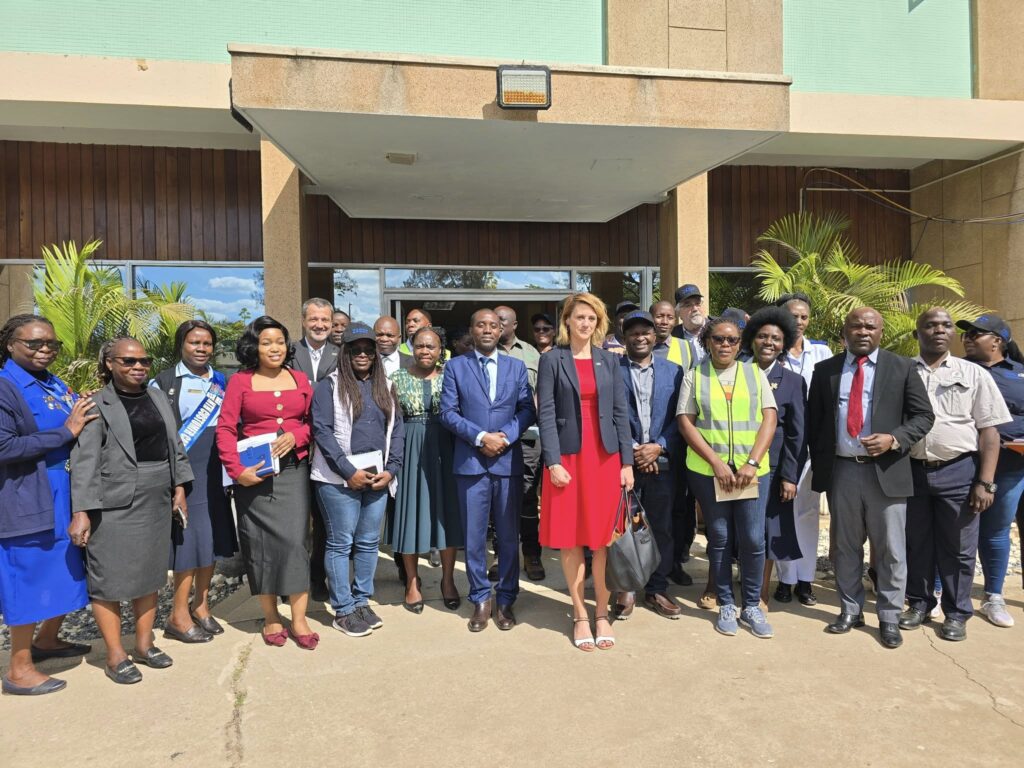Zambia Saves 56MW Through EU-Funded ZEEST Energy Efficiency Programme
Zambia has successfully saved 56 megawatts (MW) of electricity—equivalent to the output of a large power plant—through the European Union-funded Zambia Energy Efficiency and Sustainable Transformation (ZEEST) programme, without building new generation infrastructure.
During a tour of Ndola Teaching Hospital, Ministry of Energy Permanent Secretary for Electricity, Mr. Arnold Simwaba, hailed ZEEST as a transformative initiative that aligns with Zambia’s energy efficiency and climate resilience goals.
“Through strategic partnerships and targeted interventions, ZEEST has shown that we can match the impact of constructing a new power plant, at a fraction of the cost and within a shorter timeframe, simply by optimising existing energy use,” Mr. Simwaba said.
The tour, which included European Union Ambassador to Zambia and COMESA Karolina Stasiak, showcased energy-saving upgrades at the hospital, particularly improved lighting thanks to the installation of LED bulbs. Both officials praised the enhanced conditions in patient wards and hospital corridors.
Mr. Simwaba encouraged the hospital to adopt solar energy to boost energy reliability, reduce grid dependency, and ensure uninterrupted healthcare services.
Ambassador Stasiak reaffirmed the EU’s commitment to Zambia’s development priorities: “We are proud to witness tangible impacts on the ground. This is the essence of development cooperation—delivering real, lasting benefits to communities.”
Ndola Teaching Hospital’s Senior Medical Superintendent, Dr. Justor Banda, applauded the ZEEST programme for revolutionising hospital operations. “The improved lighting has significantly enhanced patient care, safety, and the working environment for staff,” he said.
With an investment of over EUR 22 million (ZMW 550 million), ZEEST consists of three components: a EUR 1.75 million programme estimate, an EUR 8 million supply contract, and a EUR 12.5 million clean cooking initiative managed directly by the EU.
Key results include the installation of 300 Power Factor Correction (PFC) units—targeting inefficient SMEs in sectors like block-making—achieving 8.4MW of savings, nearly three times more than initially projected. An ongoing LED retrofit programme in public buildings is expected to deliver an additional 48MW in savings.
Altogether, the programme is delivering 56MW in energy savings—equal to the output of a USD 56 million solar plant or a USD 156 million hydro facility.
Mr. Simwaba attributed the programme’s success to collaboration among the Ministry of Energy, ZESCO Limited, NWASCO, and the National Council for Construction, and thanked the EU for its vital technical and financial support.



